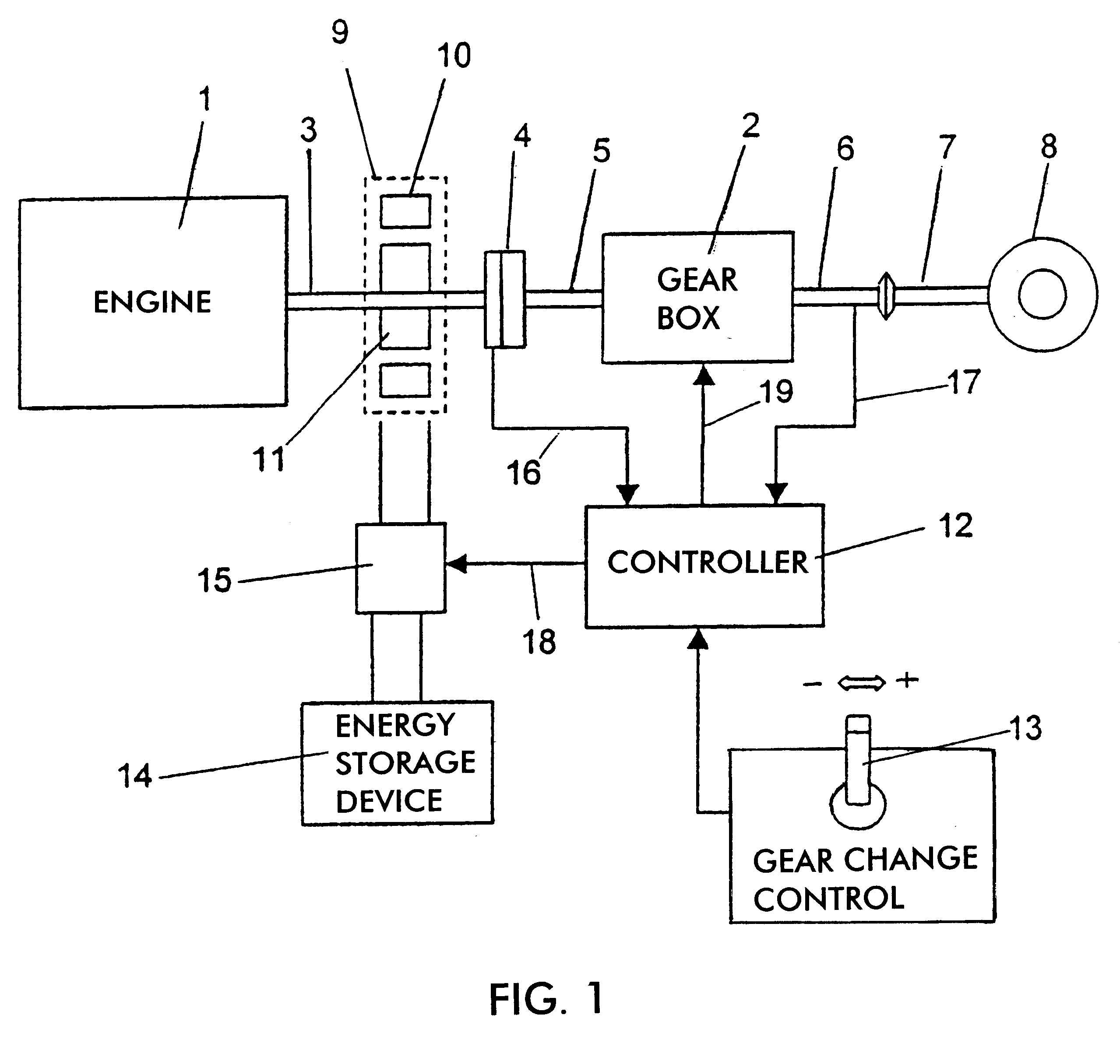Arrangement and method for a driving unit in a vehicle
a technology of driving unit and arrangement method, which is applied in the direction of machine control, process control, instruments, etc., can solve the problems of reducing the speed of the brake, complicated control of the engine by adjusting the amount of fuel supplied, etc., and achieves precise control of the torque and speed of the electric rotor machine. , the effect of great precision
- Summary
- Abstract
- Description
- Claims
- Application Information
AI Technical Summary
Benefits of technology
Problems solved by technology
Method used
Image
Examples
Embodiment Construction
FIG. 1 depicts an arrangement, according to the present invention, for a drive unit of a vehicle. The drive unit incorporates an engine 1 and a mechanical stepped gearbox 2. A connecting device is designed to transmit rotary motion from the engine 1 to the stepped gearbox 2. The connecting device incorporates an output shaft 3 from the engine 1, a clutch 4 and an input shaft 5 to the gearbox 2. The connecting device is designed to constitute during gear changing a rigid rotating unit. After the gearbox 2, driving power supplied is led from the gearbox output shaft 6, e.g. via a propeller shaft 7, to the vehicle's driving wheels 8. The present invention makes it possible to execute gear changing in the gearbox 2 without using the clutch 4. The clutch 4 thus has no function in the present invention but is included in FIG. 1, since heavy-duty vehicles do in any case usually need a clutch function at the time of starting and stopping the vehicle. The clutch takes the form of a disc clut...
PUM
 Login to View More
Login to View More Abstract
Description
Claims
Application Information
 Login to View More
Login to View More - R&D
- Intellectual Property
- Life Sciences
- Materials
- Tech Scout
- Unparalleled Data Quality
- Higher Quality Content
- 60% Fewer Hallucinations
Browse by: Latest US Patents, China's latest patents, Technical Efficacy Thesaurus, Application Domain, Technology Topic, Popular Technical Reports.
© 2025 PatSnap. All rights reserved.Legal|Privacy policy|Modern Slavery Act Transparency Statement|Sitemap|About US| Contact US: help@patsnap.com


